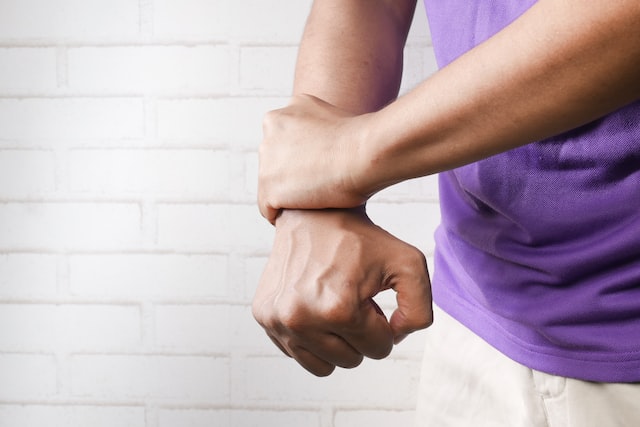Many times when we do any type of physical exercise, it is almost inevitable that certain discomforts such as cramps appear , which can spoil a great day and make you not feel comfortable training.
Whether it’s high-intensity weight training, low-intensity cardio, or just plain old, cramps have the same causes. A cramp is a sudden pinprick in the muscle that means something is wrong.

Cramps usually mean that the muscle was not ready for a certain movement and therefore is tired and sore. Cramps appear for many reasons, such as poor posture when carrying weight, too much exercise, too much intensity in the exercises or poor warm-up when doing weights or other types of exercise.
The bad thing about cramps is that they prevent us from continuing to exercise normally, since the pain is so intense, it does not allow us to continue training. In addition, on many occasions, the pain increases when we start training, which obviously we do not want to happen, since it could lead to a serious injury over time that would keep us away from sports activity for a long period of time. .
Luckily, cramps can be avoided and you will always be in optimal condition to perform any type of exercise. When we manage to avoid them, we will be able to train with greater efficiency, without unnecessary stops and therefore, achieving greater progress throughout the entire sports season.
For this reason, I am going to teach you the best tips to avoid cramps and to treat them as much as possible, so let’s go there.
Instructions to avoid cramps
- Proper warm-up:
The first thing we must do when it comes to starting to avoid cramps is to perform a proper warm-up before exercising of any kind. A warm-up prepares the muscle for exercise, which makes it better prepared to withstand pressure and not suffer damage. The way to warm up varies from one sport to another, but it is basically to do progressive exercise of very low intensity to leave the muscle prepared. If you are going to run, perform joint mobility exercises so that the body is ready to function. If you are going to lift weights, do light sets as an approximation to the final weight. If you’re going to be lifting weights all day at work, warm up your back and arms before you work out. - Stretching after training:
Once we have finished training, we must stretch the muscles a little. This is due to two things, firstly, we prevent the muscle from getting stiff and therefore avoid pain and secondly, we increase the supply of oxygen to the muscle area, which makes the muscle recover more quickly and therefore be ready sooner for the next exercise session. Stretch all the muscles involved in training, whatever the type. If you’re going to run, stretch your arms and lower body, if you’ve done chest training, stretch your arms and chest, and if you’ve been working on weight gain, stretch your back and arms. - Good nutrition:
Nutrition is key when it comes to achieving improvements in exercise, but it also helps to avoid cramps. When we have a poor diet, we get the body’s hormones totally unbalanced, which causes the body to not function properly. A body with low levels of testosterone and few vitamins is going to be much more prone to cramps than a well-nourished body. So eat the necessary vitamins, eat the calories you need, and above all, avoid poor quality processed foods, which will make your body malfunction, increase bad cholesterol and make you unwell. - Do not over train:
Cramps often occur from training too much. This is logical, the body has a limit and it cannot be overloaded with work, since there will come a point in which the body says enough. Overtraining occurs for various reasons; first of all, it occurs from training too long, especially in bodybuilding. Second, it occurs due to little rest, either between series, between days or even sleeping for a few hours. Finally, it happens by going overboard with the intensity, for example putting a lot of weight. It can also occur due to poor technique and poor posture, which occurs regularly in weight-bearing work. The best thing to avoid overloading is to sleep correctly, take the correct rest, good posture for exercises and to pick up weights and not go over the intensity when exercising. If you work with weight and you cannot avoid overtraining, at least take a good ergonomic posture that minimizes injuries as much as possible.

















